
A lesson about online communication using a simulation of a Twitter conversation in a "telephone game" style.
- Subject:
- English Language Arts
- Material Type:
- Activity/Lab
- Interactive
- Date Added:
- 04/27/2022

A lesson about online communication using a simulation of a Twitter conversation in a "telephone game" style.
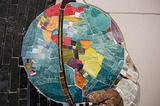
This unit explores the various ways information and ideas about climate change are presented through a variety of media. This includes the evaluation of social media posts, research into climate change issues, and an exploration of contemporary art and artists. This was designed and taught in an honors 9th grade English Language Arts Classroom by Dr. Tavia Quaid in response to student interest in climate change and to reinforce key information literacy skills.

Social media sites, like Twitter, are filled with individuals and groups seeking to further their agendas. In order to navigate this sea of information, students need to be able to weigh the relative strengths and weaknesses of tweets as sources of information. This task assesses students’ ability to consider the source of a tweet and the information contained in it en route to describing what makes it both a useful and less useful source of information.

Social media is rife with specious claims, and students often struggle to decide whether such claims are sound. This task asks students to evaluate the merits of a tweet that makes a claim about gun ownership and provides a link to an article as evidence.
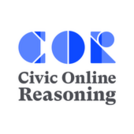
Videos are a powerful, popular, and increasingly easy way to make and spread arguments about policy topics. Compelling footage and authoritative narration may make students tempted to trust such videos. In this task, students watch a short video and explain why they might not trust a video that makes a contentious claim.
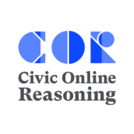
In this task, students are asked whether a doctored video posted on Facebook provides strong evidence for a political claim. Rather than take the video at face value, students should interrogate where it came from and who posted it.
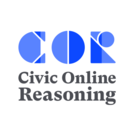
Social media has become a forum for discussions about politics and public policy. These conversations often include links to news articles, videos, and other sources, but the quality of this evidence varies tremendously. In this task, students are presented with two posts from a Facebook conversation and asked to explain which contains better evidence.
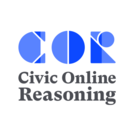
Social media outlets have become go-to places for news organizations to disseminate their stories. However, for every journalist posting on Twitter or Facebook, there are imposters uploading bogus messages in that person’s name. Identifying fake accounts is a critical skill for successfully navigating social media.
This task assesses students’ knowledge of an important symbol on Twitter and Facebook—the blue checkmark, which indicates a verified account. Students are asked which of two Facebook posts is a more trustworthy source about Donald Trump’s decision to run for president. Although both posts claim to represent Fox News, only one is verified.
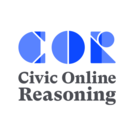
Twitter has become a powerful source of information about breaking news. Surveys show that young people increasingly rely on it for news about events as they unfold in real time. But it’s not always easy to distinguish a tweet that’s based on a legitimate source from one that relies on hearsay. This assessment taps a student’s ability to assess the trustworthiness of different kinds of tweets.
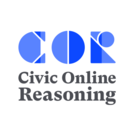
Videos shared through social media can quickly go viral, reaching millions. The ease of producing and distributing videos means that virtually anyone can post their views online. As a result, students need to become skilled at distinguishing between credible and dubious sources. In this task, students are asked to evaluate a video on Facebook. Evaluating this video is not a process of simply accepting or rejecting it; instead, students must look for the video's potential strengths and weaknesses.

Prepare your students for tomorrow's headlines with our free news & media literacy activities and inquiry-based lessons lessons.
From viral trends to breaking news on social media, students must learn to navigate a noisy, biased, and challenging world. But with the right support, they can learn to be critical and not cynical, to practice empathy, and to speak up, not sit back. This collection of Common Sense's free news & media literacy lessons, videos, and classroom activities will help you get started teaching these important and complex ideas in the classroom.
News and Media Literacy Resource Center is a curated collection of free quality teaching resources that cover news literacy, media literacy and social/cultural literacy.
**This resource is published by Common Sense Education as part of The Common Sense K-12 Digital Citizenship Curriculum.

With so many people getting their news from their social media newsfeed, how can they evaluate what is good and what might be fake? With the help of a Youtube video on the subject, student do some evaluating. This lesson is part of a media unit curated at our Digital Citizenship website, "Who Am I Online?"

This course provides a critical analysis of mass media in our culture. Various types of media such as books, films, video games, and online interactions will be discussed and reviewed. This course will also evaluate how information and ideas travel between people on a large scale.

This social media literacy unit introduces students to foundational skills in analyzing images and social media posts. It also reenforces critical thinking questions that can be applied to various forms of media. This unit was taught to 9th grade students but is easily adaptible to a range of secondary classrooms. It was also taught in conjunction with another unit focused on social media platforms and content.

This new publication by UNESCO is a timely resource and highly topical subject for all those who practice or teach journalism in this Digital Age. UNESCO's new handbook is an essential addition to teaching syllabi for all journalism educators, as well as practising journalists and editors who are interested in information, how we share it and how we use it. It is mission critical that those who practice journalism understand and report on the new threats to trusted information. Political parties, health professionals, business people, scientists, election monitors and others will also find the handbook useful in navigating the information disorder. Written by experts in the fight against disinformation, this handbook explores the very nature of journalism - with modules on why trust matters; thinking critically about how digital technology and social platforms are conduits of the information disorder; fighting back against disinformation and misinformation through media and information literacy; fact-checking 101; social media verification and combating online abuse. The seven individual modules are available online to download that enables readers to develop their own course relevant to their media environment.
This handbook is also useful for the library and information science professionals, students, and LIS educators for understanding the different dimensions of fake news and disinformation.
Table of Contents
Module One | Truth, Trust and Journalism: Why it Matters | by Cherilyn Ireton
Module Two | Thinking about "Information Disorder": Formats of Misinformation, Disinformation and Mal-Information | by Claire Wardle & Hossein Derakshan
Module Three | News Industry Transformation: Digital Technology, Social Platforms and the Spread of Misinformation and Disinformation |by Julie Posetti
Module Four | Combatting Disinformation and Misinformation Through Media and Information Literacy (MIL) | by Magda Abu-Fadil
Module Five | Fact-Checking 101 | by Alexios Mantzarlis
Module Six | Social Media Verification: Assessing Sources and Visual Content | by Tom Trewinnard and Fergus Bell
Module Seven | Combatting Online Abuse: When Journalists and Their Sources are Targeted | by Julie Posetti
Additional Resources: https://en.unesco.org/fightfakenews

This unit engages students in a variety of activities that analyze and reflect on the role of social media in our everyday lives. This includes options for collaborative group work, reading nonfiction articles, a design challenge and presentations to communicate ideas. The unit also includes a formal writing assessment option that aligns with the Common Core State Writing Standards. Activities can be adapted or combined in a variety of ways to support student reflection and analysis. These lessons were piloted in 9th grade English classes but are suitable or a range of secondary students.
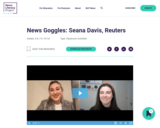
News Goggles annotations and activities provide news literacy takeaways on timely topics. These resources feature examples of actual news coverage, including full news reports, headlines, breaking news alerts or excerpts.
This video explores timely examples of misinformation, addresses journalism and press freedom topics and examines social media trends and issues.

A free quiz developed by the News Literacy project that focuses on combating misinformation on social media platforms.

Students will look at social medias and what identities are crafted in those formats, both for social media celebrities and their own digital footprints. This lesson is part of a media unit curated at our Digital Citizenship website, "Who Am I Online?"